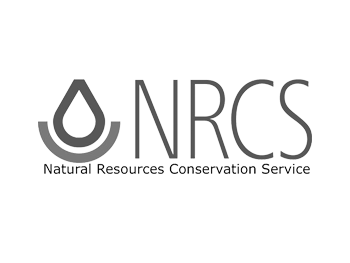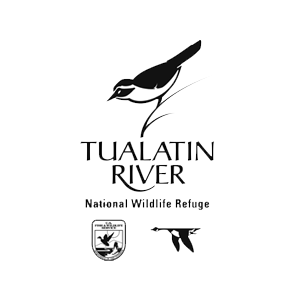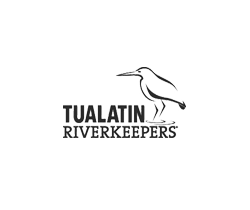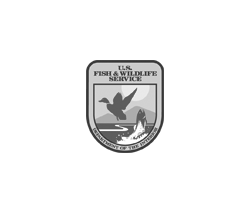Native streamside plants such as red-twig dogwood, Douglas spirea and Oregon ash are tough customers. As they provide clean water, cool shade and important habitat for wildlife, they also tolerate the ups and downs of our local streams, including winter floods and warm, drier summers.
But as young plants, they need help to handle competition from our nasty invasive weeds like Armenian blackberries, reed canarygrass, English ivy or garlic mustard. When weeds like these are present, the Tree for All partners have found that native plants perish quickly or fail to grow at all.
Eliminating weeds from a planting area makes space available for native plants to put down roots and thrive. Often when weeds are eliminated from Tree for All projects, native plants will even bounce back and grow from dormant roots and seeds that were hiding under the weedy cover.
Eliminating these weeds from a site by hand or even machine is hard, expensive work and at a big scale, not often practical. That’s why the Tree for All partners carefully and strategically use herbicides to prepare the land for new native streamside forests and wetlands.
Targeting weeds with herbicides means using the most effective, safest chemicals, in the right amounts, and applied at the right moment in a weed’s lifecycle. When applying these chemicals, staff and contractors must follow the rules set by federal and state authorities. Afterwards, ecological enhancement professionals carefully evaluate the results and adapt to changes. We also share results with each other to find the best and safest way to prepare sites, eliminate noxious weeds, and control invasions by new, non-native plants.
Most of our herbicide use takes place when native plants are too young to hold their own against weeds. As these plants grow and thrive, weeds become less of a threat and herbicides are not as critical a tool in the kit. We care for native trees, shrubs and grasses until they have grown into healthy populations that provide habitat, shade and other benefits for the watershed.
Learn more about responsible herbicide use in agricultural, urban and rural restoration by following the links below:
National Pesticide Information Center
Pesticide and Fertilizer Programs (Oregon Department of Agriculture)
Weed Watchers workshops (Tualatin Soil and Water Conservation District)































